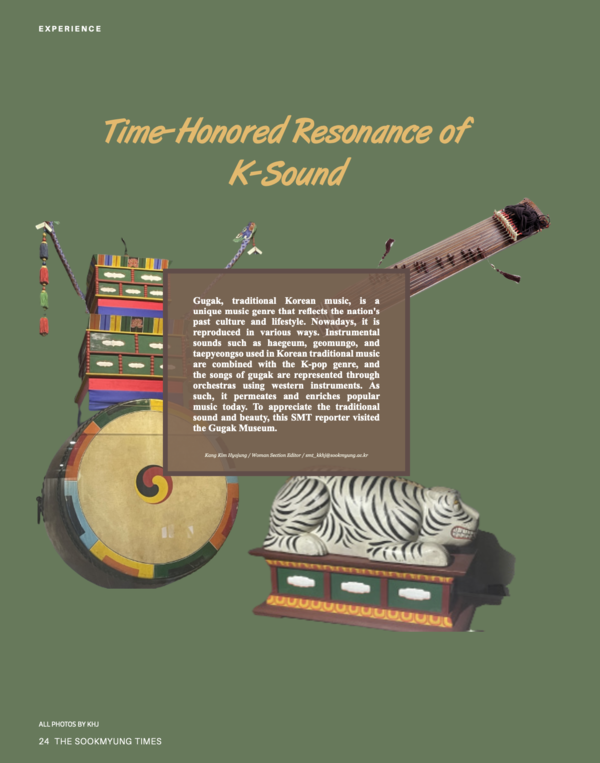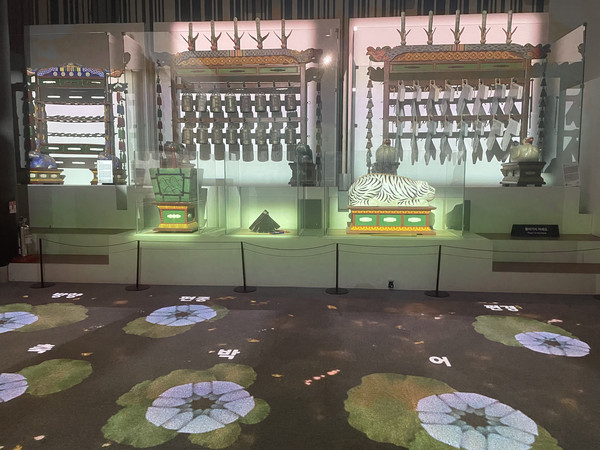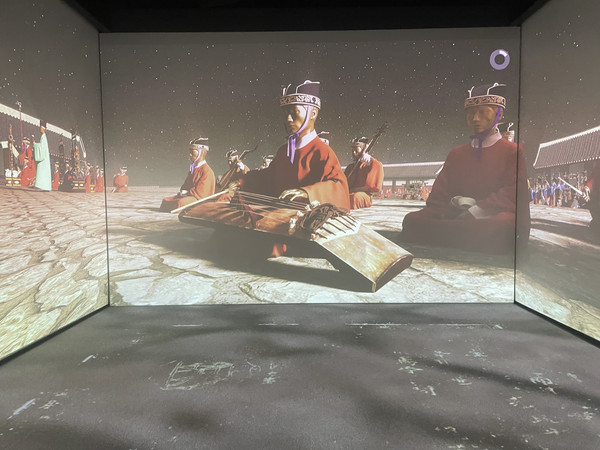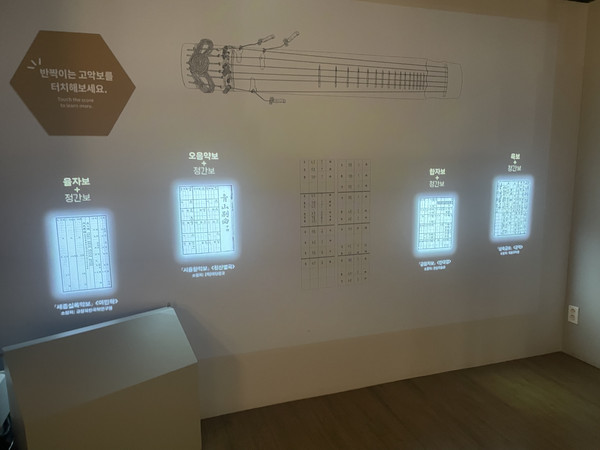
Gugak, traditional Korean music, is a music genre that reflects the nation's past culture and lifestyle. Nowadays, it is reproduced in various ways. Instrumental sounds such as haegeum, geomungo, and taepyeongso used in Korean traditional music are combined with the K-pop genre, and the songs of gugak are represented through orchestras using western instruments. As such, it enriches popular music today. To appreciate the traditional sound and beauty, this SMT reporter visited the Gugak Museum.

Lively echoes of history
Gugak refers to various branches of music genres in Korean traditional society and incorporates diverse local emotions. In the past, music was utilized in religion and ritual ceremonies, labor, and for amusement. This established a standard for distinguishing gugak according to context, place, and social class. According to this standard, it is divided into court music that expresses Confucian rituals, pungryu music used for the Confucian lifestyle of yangban, the highest social class of the Joseon Dynasty, and classical scholars, and everyday folk music for civilian life. Such diverse genres of music have been passed down through the Joseon Dynasty over time, but as the dynasty disappeared and began to modernize, it converged under one name, gugak.
The charm of gugak is derived from the unique lifestyles and cultures of the past from before the Joseon Dynasty that are not commonly experienced today. Current gugak preserves the style of music by using customary musical expressions, Korean traditional instruments, and unique vocalization methods. Contrary to Western music which composes songs around chords, a group of notes, Korean traditional music composes music by utilizing the vitality of each note. This allows the audience to focus on a single melody and appreciate the weight and movement of each. In this way, gugak, which makes use of the characteristics of the tone, creates an aesthetic of emptiness. It uses the technique of sound by bending, shaking, pushing, rising, falling, and pressing the notes between these margins. It shows the beauty of sound in the margins of gugak and is reproduced as lively music.

Touch the clear sound and waves
The Gugak Museum provides a space to listen to and experience the sounds of traditional instruments in addition to its relics. "The Korean Traditional Music Courtyard" section on the first floor displays the gugak instruments used to play court music so that visitors can listen to the sound. You can enjoy the sound of the instruments such as eo, jingo, bak, pyeongyeong, pyeonjong, and so on by stepping on the motion screen with the name of the instrument on the floor. It illustrates well the fundamental concepts in traditional Korean philosophy, the idea of yin and yang and the five elements, which emphasize harmony and balance through symbolic representation. The eo is a tiger-shaped percussion instrument that is carved out of wood and painted white to symbolize the west signals the end of the music, and the chuk, which is played by hitting a wooden stick into a box, is painted blue symbolizing the east to mark the beginning of the music. This shows that gugak reflects historical context and is a formal music genre. The instruments that reflect these ideas produce a unique sound for each. Musical instruments such as the bak and jingo are made of wood, so their temperate and gentle sounds are attractive. Also, the pyeongyeong and pyeonjong make quite a clear sound. The pyeongyeong is a percussion instrument consisting of a wooden frame and a hard stone, and it makes a clear sound through being made with natural materials. It is beautifully decorated with a variety of animals, plants, and patterns to entertain the eyes. In this space, media art in the form of the film "Jongmyojeryeak, Sing for the Joseon Dynasty" reinterprets Jongmyo Jeryeak using 3D modeling technology and is screened every 30 minutes. Jongmyo Jeryeak has been Korea's royal ancestral music for 500 years and was inscribed as a UNESCO Intangible Cultural Heritage in 2001. The film shows how court music was produced in the Joseon Dynasty and the ideas of that time, vividly transporting viewers to the Joseon Dynasty.
To try playing the instruments, the SMT reporter moved to the "Interactive Exhibits" section on the second floor. While playing the gayageum in this section, she could feel a different charm from the geomungo and haegeum, which are string instruments used in the court. The gayageum was more cheerful than the geomungo, which makes a thick and low sound, and more elegant than the haegeum, which makes a cheerful and high sound. It is played by plucking the string with the right hand and shaking or pressing the string with the left hand. However, the SMT reporter could not produce any sound due to the firmness of the string. In spite of that, she felt the sound of 25 strings while plucking each string. Next, there was a space where you could listen to the sound of the pyeonjong. Bells of the same size but different thickness are tapped with a rod. It was impressive that the thicker the bell, the higher the pitch, and the greater diversity of sound. Also, in the "Musical Scores and Historical Documents" section, you can view traditional scores and appreciate how the sound is reproduced. These scores were notated in the Jeongganbo style created by King Sejong, which displays notes vertically. The advantage of this is being able to clearly distinguish the length of one sound from others. In this section, when touching the sheet music, you can hear the performance method of reproducing the beat, sound, and rhythm of the sheet music on the gayageum. The SMT reporter was able to listen to the performances while looking at Jeongganbo and easily understand how to read the score and play it. This experience will inform viewers of the uniqueness of gugak by learning not only its sound but also the production method.

Track back to our origins
Gugak, traditional Korean music, is a historical product that contains various social and cultural values of the time and has a different charm from other music genres. If you want to feel comfortable, listening to gugak that produces the notes one by one and makes the sound technique stand out will also enrich your ears.



